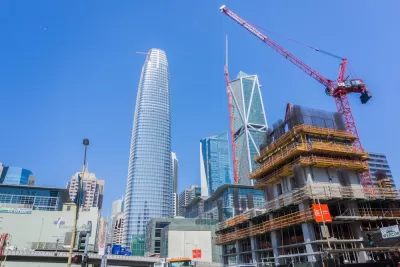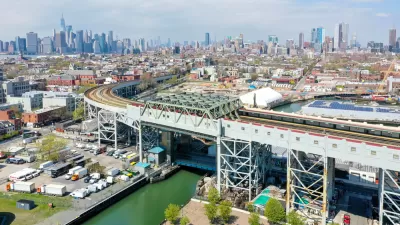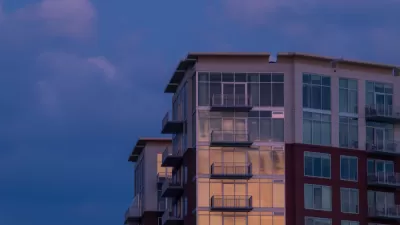YIMBYs are describing the jobs-housing imbalance represented in the Central SoMa Plan as reminiscent of the housing policies of cities farther down the Peninsula.

"For the first time since San Francisco’s 1970’s downtown highrise boom, activists are demanding that new office space—-in this case in Central SOMA— be balanced by new housing," reports Randy Shaw.
The advocates, in this case, are YIMBYs, with a position on the Central SoMa Plan clearly explained in an opinion piece by Joe Rivano Barros in the SF Examiner.
Shaw starts from an assumption that San Francisco’s affordability crisis resulted from decades of adding jobs but not housing. "Activists see this mistake repeating in a Central SOMA plan adding 40,000-50,000 jobs and only 7000 housing units." YIMBYs see that ratio as a formula for displacement and gentrification.
Yet, according to Shaw, "Mission activists and D9 Supervisor Hillary Ronen are aggressively fighting to stop housing from being built on a Laundromat at Mission and 25th Streets." That kind of housing development opposition, whether from self-interest or more communitarian concerns, isn't afforded to proposals that would add many jobs without commensurate housing units: "neither are battling a Central SOMA plan which will unquestionably drive up Mission rents and evictions."
The article also examines the question of why there's a lack opposition to the plan, as well as the position of a group of candidates for the supervisor's position in District 6.
As for the details of the Central SoMa Plan, J.K. Dineen reported on the key components of the plan at the end of February 2018: "[the plan] would dramatically raise height limits in portions of a 17-block zone that stretches from close to Market Street south to Townsend Street, and from Second Street west to Sixth Street.” According to Shaw, "[the] plan calls for two forty story condo towers at Fourth and Townsend, and 3.1 million square feet of new office space overall. It’s 20 million square feet of development also includes 2,310 affordable housing units, 33 percent of the total."
FULL STORY: CENTRAL SOMA EXPOSES SF’S POLITICAL IDENTITY CRISIS

Planetizen Federal Action Tracker
A weekly monitor of how Trump’s orders and actions are impacting planners and planning in America.

Maui's Vacation Rental Debate Turns Ugly
Verbal attacks, misinformation campaigns and fistfights plague a high-stakes debate to convert thousands of vacation rentals into long-term housing.

San Francisco Suspends Traffic Calming Amidst Record Deaths
Citing “a challenging fiscal landscape,” the city will cease the program on the heels of 42 traffic deaths, including 24 pedestrians.

Amtrak Rolls Out New Orleans to Alabama “Mardi Gras” Train
The new service will operate morning and evening departures between Mobile and New Orleans.

The Subversive Car-Free Guide to Trump's Great American Road Trip
Car-free ways to access Chicagoland’s best tourist attractions.

San Antonio and Austin are Fusing Into one Massive Megaregion
The region spanning the two central Texas cities is growing fast, posing challenges for local infrastructure and water supplies.
Urban Design for Planners 1: Software Tools
This six-course series explores essential urban design concepts using open source software and equips planners with the tools they need to participate fully in the urban design process.
Planning for Universal Design
Learn the tools for implementing Universal Design in planning regulations.
Heyer Gruel & Associates PA
JM Goldson LLC
Custer County Colorado
City of Camden Redevelopment Agency
City of Astoria
Transportation Research & Education Center (TREC) at Portland State University
Jefferson Parish Government
Camden Redevelopment Agency
City of Claremont





























